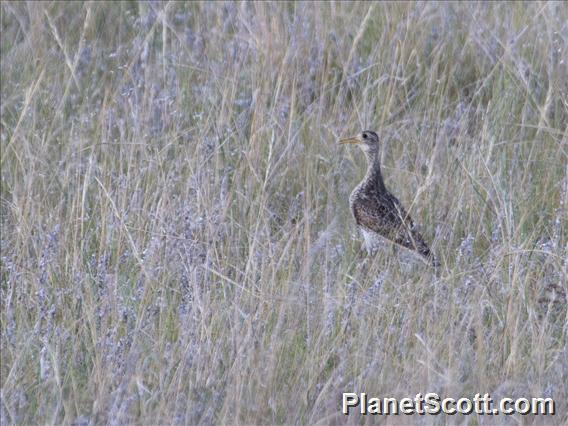Upland Sandpiper (Bartramia longicauda)

Upland Sandpiper (Bartramia longicauda)
×


Upland Sandpiper (Bartramia longicauda)
About Upland Sandpiper (Bartramia longicauda)
- Kingdom: Animals
- Phylum: Chordates
- Class: Birds
- Order: Pelicans
- Family: Sandpipers and Allies
The upland sandpiper is a large sandpiper, closely related to the curlews. Older names are the upland plover and Bartram's sandpiper. In Louisiana, it is also colloquially known as the papabotte. It is the sole extant member of the genus Bartramia. The genus name and the old common name Bartram's sandpiper commemorate the American naturalist William Bartram. The species name longicauda is from Latin longus, "long" and caudus, "tail". The name "Bartram's sandpiper" was made popular by Alexander Wilson, who was taught ornithology and natural history illustration by Bartram.
Source: Wikipedia
Lifelists
Trips
Visits
-
2012-07-10
Chase Lake NWR, United States of America -
2012-07-11
Theodore Roosevelt National Park - South Unit, United States of America -
2013-04-20
Attwater Prairie Chicken National Wildlife Refuge, United States of America



